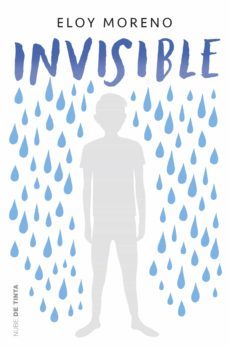Imprescindibles
Ficción
Literatura ContemporáneaEstudios literariosClásicosCuentosPoesíaTeatroLibros de bolsillo Sagas literarias
Géneros literarios Novela romántica y eróticaNovela negraNovela históricaNarrativa fantásticaNovela de ciencia ficciónNovela de terrorNarrativa de humorNarrativa de viajes
No Ficción
Ciencias y tecnología BiologíaCienciasCiencias naturalesDivulgación científicaInformáticaIngenieríaMatemáticasMedicinaSalud y dietas Formación Idiomas Estilo de vida Libros de CocinaGuías de viajeNarrativa de viajesDeportesLibros de JuegosManualidades
Humanidades Autoayuda y espiritualidadCiencias humanasDerechoEconomía y EmpresaPsicología y PedagogíaFilosofíaSociología Filología BiblioteconomíaEstudios filológicosEstudios lingüísticosEstudios literariosHistoria y crítica de la Literatura
Infantil
Juvenil
Cómic y Manga
Novela gráfica Novela gráfica americanaNovela gráfica europeaNovela gráfica de otros países Personajes, series y sagas Series y sagasStar Wars Superhéroes Cómics DCCómics MarvelCómics otros superhéroesCómics Valiant
eBooks
Literatura ContemporáneaNarrativa fantásticaNovela de ciencia ficciónNovela de terrorNovela históricaNovela negraNovela romántica y erótica Juvenil Más de 13 añosMás de 15 años Infantil eBooks infantiles
Humanidades Autoayuda y espiritualidadCiencias humanasEconomía y EmpresaPsicología y PedagogíaFilosofía Historia Historia de EspañaHistoria Universal Arte CineMúsicaHistoria del arte
Ciencia y tecnología Ciencias naturalesDivulgación científicaMedicinaSalud y dietas Filología Estudios lingüísticosEstudios literariosHistoria y crítica de la Literatura Estilo de vida CocinaGuías de viajeOcio y deportes
CHARLOTTE P. GILMAN
Recibe novedades de CHARLOTTE P. GILMAN directamente en tu email
Filtros
Del 1 al 2 de 2
SIGLO XXI (MEXICO) 9789682324178
Narrado con soberbia precisión psicológica y dramática, El tapiz amarillo se destaca por la autenticidad imaginativa con la que pinta el descenso a la locura de una mujer y por la fuerza de su testimonio de la importancia que la libertad tiene para la mujer.
Ver más
Tapa blanda
Lebooks Editora 9788583866268
The Yellow Wallpaper is a compelling exploration of psychological distress, gender roles, and the oppressive nature of societal expectations in the late 19th century. Charlotte Perkins Gilman critiques the medical and domestic constraints imposed on women, illustrating the devastating consequences of enforced passivity and isolation. Through the protagonists descent into obsession and madness, the story exposes the dangers of silencing female agency and the pervasive impact of patriarchal control. Since its publication, The Yellow Wallpaper has been celebrated for its psychological depth and symbolic richness. Its exploration of themes such as mental health, autonomy, and the struggle against systemic oppression has solidified its place as a seminal work of feminist literature. The protagonists haunting narrative and her gradual unraveling continue to resonate with readers, shedding light on the historical and ongoing challenges faced by women. The storys enduring relevance lies in its ability to capture the intersection of mental illness and societal repression, offering a powerful critique of medical paternalism and gender-based constraints. By depicting the protagonists inner turmoil and her desperate attempt to assert control over her own reality, The Yellow Wallpaper invites readers to reflect on the broader implications of autonomy, self-expression, and the consequences of ignoring individual needs.
Ver más
eBook
Del 1 al 2 de 2






























